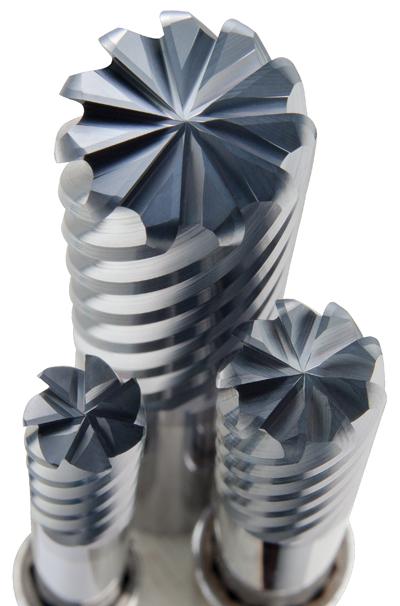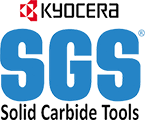
GS Tool Co. has expanded its Multi-Carb high performance end mill offering to include metric corner radius options. The Multi-Carb incorporates a large number of flutes for stability and high feed finishing capabilities in applications where surface finish and tolerance are critical factors.
Available with 7, 9 or 11 flutes based on tool diameter, the odd number of flutes allow for a smoother cutting performance while controlling the natural harmonics by staggering entry and exit of the cutting edges. The optimized cutting geometry is designed for finishing applications of challenging materials such as titanium, stainless steel and high temperature alloys that require superior surface finishes and tolerances. Ideal applications include aerospace structure components; ferrous housings, pumps and manifolds; defense applications and various medical components.
Multi-Carb finishing end mills are manufactured using high performance raw material for reliable and consistent performance and are coated exclusively with Ti-NAMITE-A (AlTin) for increased tool life and proven performance at high temperatures.
Contact Details
Related Glossary Terms
- alloys
alloys
Substances having metallic properties and being composed of two or more chemical elements of which at least one is a metal.
- feed
feed
Rate of change of position of the tool as a whole, relative to the workpiece while cutting.
- flutes
flutes
Grooves and spaces in the body of a tool that permit chip removal from, and cutting-fluid application to, the point of cut.
- milling machine ( mill)
milling machine ( mill)
Runs endmills and arbor-mounted milling cutters. Features include a head with a spindle that drives the cutters; a column, knee and table that provide motion in the three Cartesian axes; and a base that supports the components and houses the cutting-fluid pump and reservoir. The work is mounted on the table and fed into the rotating cutter or endmill to accomplish the milling steps; vertical milling machines also feed endmills into the work by means of a spindle-mounted quill. Models range from small manual machines to big bed-type and duplex mills. All take one of three basic forms: vertical, horizontal or convertible horizontal/vertical. Vertical machines may be knee-type (the table is mounted on a knee that can be elevated) or bed-type (the table is securely supported and only moves horizontally). In general, horizontal machines are bigger and more powerful, while vertical machines are lighter but more versatile and easier to set up and operate.
- tolerance
tolerance
Minimum and maximum amount a workpiece dimension is allowed to vary from a set standard and still be acceptable.

